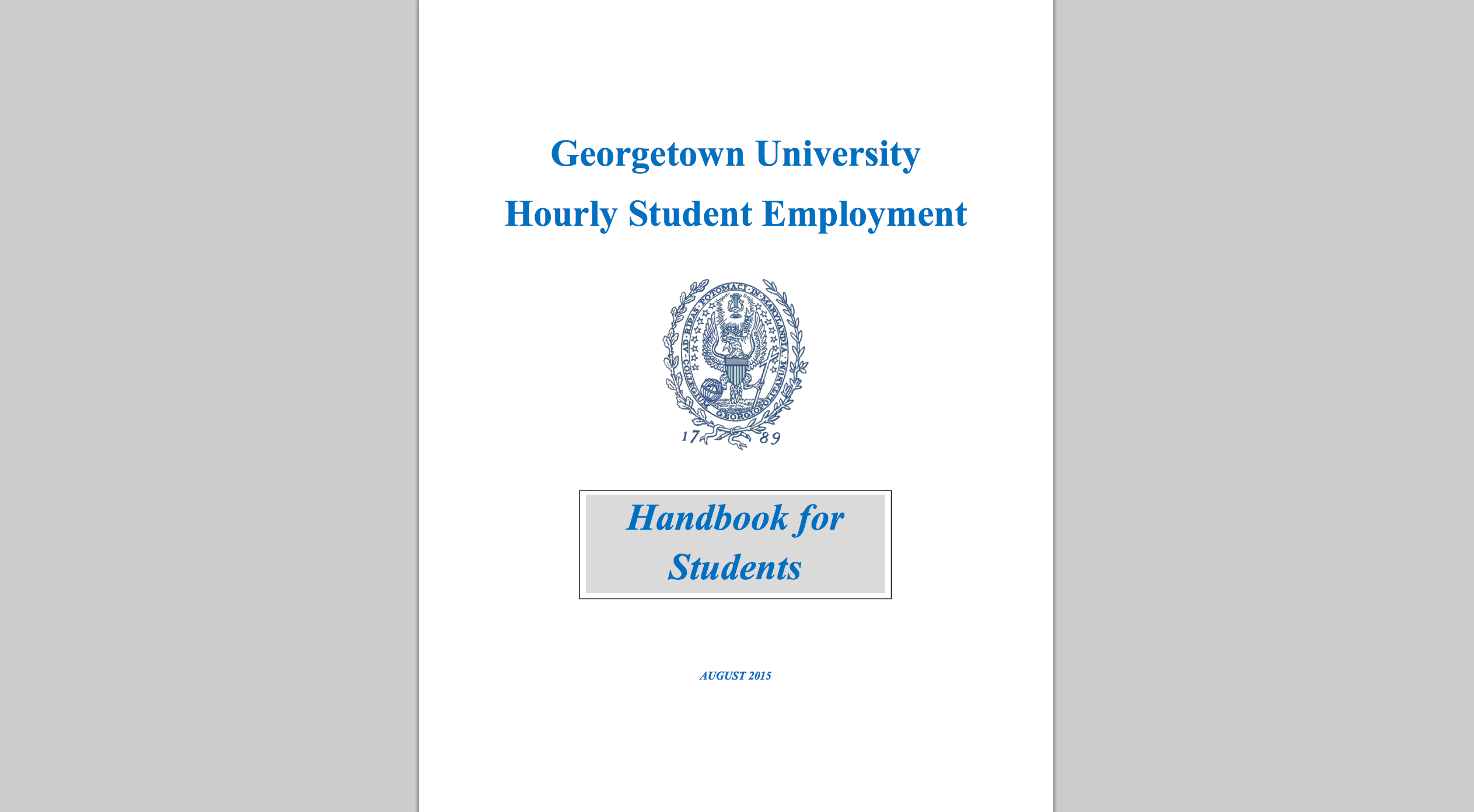The Student Employment Office (SEO) published the new Student Employee Handbook this summer in an effort to standardize access to information surrounding student employment. The handbook replaces the previous system in which there was no single set of published guidelines for student employees.
The handbook describes the rights and responsibilities of a student employee, for example the right to “receive adequate training pertaining to your position” or the responsibility to “accurately track hours worked,” along with procedural information about finding a job, getting paid, and working on the federal work-study program among a variety of other important information for prospective and current student employees.
“I visualize the handbook as a resource that can be used in the worst case scenarios: if you get fired from your job or if you are having problems with your manager and you don’t know who to go to,” said Esmeralda Huerta (SFS ’17), a member of GUSA’s Student Employment Experience Committee (SEEC).
Before the creation of the handbook, students had to visit multiple websites for comprehensive information about their employment. The handbook streamlines all of this information, from who is eligible to how to get paid, into one document.
“We weren’t seeing a clearly universal handbook. It would just be dependent on the employer so some employers would be really good about providing their students with their resources, their rights, what their roles were as student employees, but other employers weren’t doing that, and so it was very unclear for some students,” said Maddy Moore (SFS ’17), also a member of the SEEC. “We wanted to make that very transparent.”
The creation of the handbook was a multi-step process involving many different groups and offices in addition to a variety of students and administrators. According to Huerta, the GUSA’s Office of the Student Worker Advocate created the SEEC in the spring of 2015 to investigate working conditions for student employees. During interviews with students, they found a wide variety of positive and negative experiences with university employment.
Because of this variation, the committee decided that there needed to be an official resource to consult for questions about student employment. About halfway through the past semester, Dean Patricia McWade of Student Financial Services began drafting the document with her office. Over the summer, they sent a draft to students on the SEEC for review.
Referring to the wide range of people involved in the project, Huerta said, “It was actually really nice to see how closely everyone was collaborating because they do care about these issues, and I think that we got something positive out of it.”
According to Dean McWade, the new handbook can be a great resource for students who have read it, but as Huerta noted, not many students have heard of it.
“I didn’t know we had a handbook,” said Emma Graves (SFS ’18), a student employee in the Department of Performing Arts. Still, upon being explained the basic purpose and content of the handbook, Graves said, “it sounds like a good resource. Lord knows I was confused about work-study last year and so I had to do a lot of googling to figure it out. It would’ve been nice if there had been a handbook.”
According to Huerta, the new handbook is only the first step among many for improving the experience of student employees at Georgetown. The SEO and GUSA’s Office of the Student Worker Advocate are also in the process of addressing several other initiatives, including more publicity of the new handbook and the development of a student employee bill of rights and an employer handbook.





